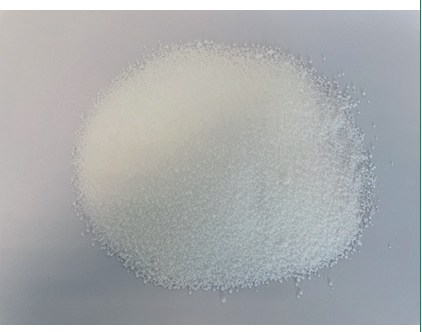[Alias] Crotonic acid, trans-2-butenoic acid.
[Molecular Formula]C4H6O2
[Structural Formula]CH3CH=CHCOOH

[Properties]Butenoic acid has three isomers. Among them, crotonic acid is the most important because of its stable nature, and commercial products are generally crotonic acid. Crotonic acid is a colorless crystal with a relative density of 1.018 (15°C), a melting point of 71.4-71.7°C, a boiling point of 185°C, a flash point of 87.8°C, and a refractive index of 1.4228 (80°C). Soluble in water, the aqueous solution is acidic, the solubility in 100mL water (25℃) is 9.4g, and it is easily soluble in warm water, ethanol, ether, acetone and toluene. It can be converted into isocrotonic acid in toluene solution. This product is an unsaturated fatty acid with strong reactivity, can polymerize, and can also undergo halogenation, amination, esterification and other reactions.
[Use]Organic synthesis raw material, used for the synthesis of methyl crotonate, cellulose crotonate, crotonic anhydride, butyl Acrylic acid, acid chloride, etc. It is also used in the manufacture of synthetic resins, drugs, spices, coatings, plasticizers, bactericides, adhesives, film developing agents and electrostatic copying agents.
[Brief preparation method]
① Use crotonaldehyde (or crotonaldehyde) as raw material, oxidized by air or oxygen in the presence of copper acetate-cobalt acetate (or silver powder) catalyst And made.
② Acetaldehyde is condensed with malonic acid in anhydrous ether in the presence of pyridine to produce crotonic acid.
[Safety and Protection] Packed in paper drums or galvanized iron drums with inner plastic bags, with a net weight of 10kg or 20kg per drum (stored in a cool place Dry place. Store and transport according to general chemical regulations.
This product is non-toxic, but it is irritating to the skin. Its irritating properties are similar to acrylic acid.

 微信扫一扫打赏
微信扫一扫打赏

